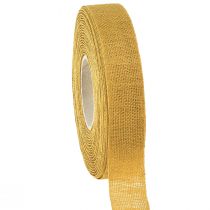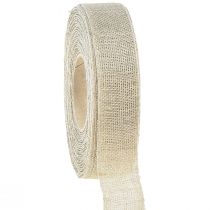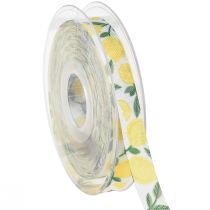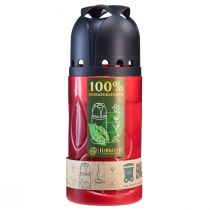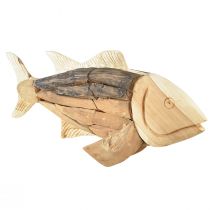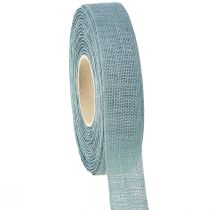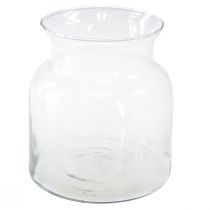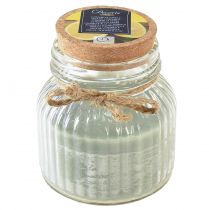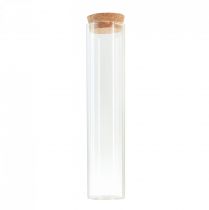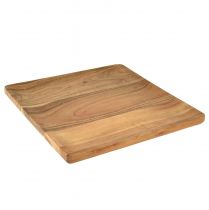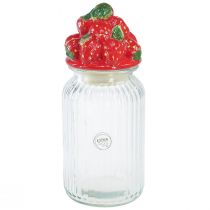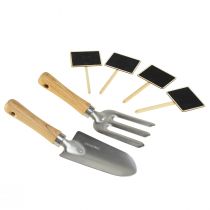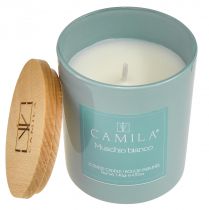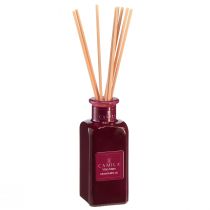Category: E like Euphorbie
Search terms: Edelrost to Euphorbie
 Earthenware describes all handicraft products that have an earthy origin in their material and usually originate from the production of a potter. The most important representatives of earthenware include vases, pots and bowls, in which clay or clay is the material basis. Ceramics and porcelain can also be considered earthenware despite the addition of other substances to the manufacturing process. Common to all goods is the production of a loamy mixture of soils of different properties by adding water, which is brought into specific shapes manually or by machines. In order for earthenware to maintain its shape permanently, the last step is to burn it, this removes the water from the material and brings about an additional strength of the material. Various techniques for the production of earthenware have been established over the centuries, handicraft production in favor of industrial production is becoming increasingly rare. Shaping works of art out of earth and water is one of the first and most important forms of human expression, and archaic figures and vessels are still being excavated by archaeologists from the very beginning of our existence. Modern earthenware proves to be particularly robust and can be purchased at relatively favorable conditions, the floristik21.de online shop also offers sufficient opportunities for this.
Earthenware describes all handicraft products that have an earthy origin in their material and usually originate from the production of a potter. The most important representatives of earthenware include vases, pots and bowls, in which clay or clay is the material basis. Ceramics and porcelain can also be considered earthenware despite the addition of other substances to the manufacturing process. Common to all goods is the production of a loamy mixture of soils of different properties by adding water, which is brought into specific shapes manually or by machines. In order for earthenware to maintain its shape permanently, the last step is to burn it, this removes the water from the material and brings about an additional strength of the material. Various techniques for the production of earthenware have been established over the centuries, handicraft production in favor of industrial production is becoming increasingly rare. Shaping works of art out of earth and water is one of the first and most important forms of human expression, and archaic figures and vessels are still being excavated by archaeologists from the very beginning of our existence. Modern earthenware proves to be particularly robust and can be purchased at relatively favorable conditions, the floristik21.de online shop also offers sufficient opportunities for this.
 The ivy needle is a special clip that is used to attach ivy and other overgrown green plants. The purpose of an ivy needle is to guide the natural growth of plants in a targeted direction without the plants needing to be pruned. Ivy and similar tendrils tend to lead their growth uncontrollably in various directions, which is not desirable depending on the green area or application. The ivy needle is often used, for example, for grave maintenance, where in the winter months the choice is often made of ivy as an evergreen plant for the attractive design of a burial site. The uncontrolled growth of the plant quickly ensures that individual branches protrude onto paths or neighboring graves, which is prevented by the use of ivy needles. Needles of this type are of course also used in private environments and cannot be used alone with ivy and vine plants in order to achieve a more aesthetic look when shaping green plants. Ultimately, ivy needles are also used in a professional environment and help florists to decorate their own shop naturally.
The ivy needle is a special clip that is used to attach ivy and other overgrown green plants. The purpose of an ivy needle is to guide the natural growth of plants in a targeted direction without the plants needing to be pruned. Ivy and similar tendrils tend to lead their growth uncontrollably in various directions, which is not desirable depending on the green area or application. The ivy needle is often used, for example, for grave maintenance, where in the winter months the choice is often made of ivy as an evergreen plant for the attractive design of a burial site. The uncontrolled growth of the plant quickly ensures that individual branches protrude onto paths or neighboring graves, which is prevented by the use of ivy needles. Needles of this type are of course also used in private environments and cannot be used alone with ivy and vine plants in order to achieve a more aesthetic look when shaping green plants. Ultimately, ivy needles are also used in a professional environment and help florists to decorate their own shop naturally.
 The quail egg belongs to the eggs of native birds, which serve the multiplication of these animals and therefore their firm employment in the decoration area. The quail is the smallest species of chicken bird found in this country. Since quail are less among the breeding animals of German agriculture, quail eggs are less common, so they are counted in the use of food to the rare delicatessen. As with chickens and other bird species, consciously eat eggs for consumption that are not intended for fertilization or reproduction of quail. Significantly more decorative than chicken or goose eggs are the eggs of the quail through their sprinkled outer shell. If quail eggs are used for the decoration area, the very fragile shell should be opened carefully; in the case of industrial processing to decorative items. Quail eggs are most commonly used in the Easter season and they are easter egg shrub, in the modern flower arrangements and planters are embellished with quail eggs throughout the year.
The quail egg belongs to the eggs of native birds, which serve the multiplication of these animals and therefore their firm employment in the decoration area. The quail is the smallest species of chicken bird found in this country. Since quail are less among the breeding animals of German agriculture, quail eggs are less common, so they are counted in the use of food to the rare delicatessen. As with chickens and other bird species, consciously eat eggs for consumption that are not intended for fertilization or reproduction of quail. Significantly more decorative than chicken or goose eggs are the eggs of the quail through their sprinkled outer shell. If quail eggs are used for the decoration area, the very fragile shell should be opened carefully; in the case of industrial processing to decorative items. Quail eggs are most commonly used in the Easter season and they are easter egg shrub, in the modern flower arrangements and planters are embellished with quail eggs throughout the year.
 Epiphytes are all plant species that have opted for an epiphytic way of life, ie that grow on other plants. Epiphytes benefit from this way of life as land plants from a stronger incidence of light, which contributes to photosynthesis and also provides the plants with better light and water. The most famous epiphytes in this country include numerous forest mosses, which rarely receive adequate light supply on the moist and dark soil and therefore grow on the trunk of trees. Various types of mushrooms also use the epiphytic way of life and settle on trees and other trees. The advantage that epiphytes receive from this is offset by the disadvantage of a potential loss of contact with the ground, which leads to an undersupply of the plant with nutrients that are found in the ground. In addition to their particular growth, epiphytes are also characterized by other botanical skills that particularly suit their individual way of life. The formation of bromeliads should be mentioned explicitly in order to store water on the leaf surface in a targeted manner or to open the bromeliads again in times of greater drought. The way in which the epiphytes live is neither parasitic nor symbiotic with regard to the plants on which they have settled. In most cases, there is a neutral coexistence of, for example, trees and their mosses.
Epiphytes are all plant species that have opted for an epiphytic way of life, ie that grow on other plants. Epiphytes benefit from this way of life as land plants from a stronger incidence of light, which contributes to photosynthesis and also provides the plants with better light and water. The most famous epiphytes in this country include numerous forest mosses, which rarely receive adequate light supply on the moist and dark soil and therefore grow on the trunk of trees. Various types of mushrooms also use the epiphytic way of life and settle on trees and other trees. The advantage that epiphytes receive from this is offset by the disadvantage of a potential loss of contact with the ground, which leads to an undersupply of the plant with nutrients that are found in the ground. In addition to their particular growth, epiphytes are also characterized by other botanical skills that particularly suit their individual way of life. The formation of bromeliads should be mentioned explicitly in order to store water on the leaf surface in a targeted manner or to open the bromeliads again in times of greater drought. The way in which the epiphytes live is neither parasitic nor symbiotic with regard to the plants on which they have settled. In most cases, there is a neutral coexistence of, for example, trees and their mosses.
 Epiphytic is a property of plants that, if possible, look for other plants as a habitat to grow on. The epiphytic way of life is rarely characterized by a symbiosis, ie the plant occupied does not necessarily benefit from its plant or vice versa. In the wild, epiphytic plants can mainly be found in the form of mosses that thrive on trees and even inanimate objects such as stones. The epiphytic way of life of numerous algae species that settle on sea grass or other living organisms in the sea is also known in the sea. In most cases, epiphytic plants have decided evolutionarily to this special way of life in order to benefit more from light and oxygen. It is precisely these elements that are much more difficult to obtain on the dark and moist forest floor or in the depths of the sea than on other green plants that themselves benefit from oxygen and light and therefore thrive. However, the epiphytic way of life also involves risks for these plants, since in the worst case there is a complete loss of contact with the soil and there is no longer an adequate supply of nutrients via the earth.
Epiphytic is a property of plants that, if possible, look for other plants as a habitat to grow on. The epiphytic way of life is rarely characterized by a symbiosis, ie the plant occupied does not necessarily benefit from its plant or vice versa. In the wild, epiphytic plants can mainly be found in the form of mosses that thrive on trees and even inanimate objects such as stones. The epiphytic way of life of numerous algae species that settle on sea grass or other living organisms in the sea is also known in the sea. In most cases, epiphytic plants have decided evolutionarily to this special way of life in order to benefit more from light and oxygen. It is precisely these elements that are much more difficult to obtain on the dark and moist forest floor or in the depths of the sea than on other green plants that themselves benefit from oxygen and light and therefore thrive. However, the epiphytic way of life also involves risks for these plants, since in the worst case there is a complete loss of contact with the soil and there is no longer an adequate supply of nutrients via the earth.
 The harvest crown is a wattle that is made in autumn at the end of the grain harvest and is closely related to the harvest wreath. The tradition of the harvest crown can still be found today in the southern federal states of Germany and Austria, and is strongly influenced by the Catholic tradition of festivals such as Thanksgiving and the Day of Repentance and Repentance. The tradition goes back to the middle of the 19th century and consists of forming a large crown from the last spikes of a successful harvest year, which functions, for example, as decoration for the gift table at the Thanksgiving Day. The harvest crown is therefore not put on a specific person, but should rather thank God with its voluminous shape as king of the people for this year's harvest yield. Since the crown usually measures one meter or more in size, a stable wire mesh must first be made, around which the individual ears are braided. Today, the tradition is carried out primarily by rural women, who are often organized as an association or association and for whom the festive preparations for Thanksgiving are an essential task.
The harvest crown is a wattle that is made in autumn at the end of the grain harvest and is closely related to the harvest wreath. The tradition of the harvest crown can still be found today in the southern federal states of Germany and Austria, and is strongly influenced by the Catholic tradition of festivals such as Thanksgiving and the Day of Repentance and Repentance. The tradition goes back to the middle of the 19th century and consists of forming a large crown from the last spikes of a successful harvest year, which functions, for example, as decoration for the gift table at the Thanksgiving Day. The harvest crown is therefore not put on a specific person, but should rather thank God with its voluminous shape as king of the people for this year's harvest yield. Since the crown usually measures one meter or more in size, a stable wire mesh must first be made, around which the individual ears are braided. Today, the tradition is carried out primarily by rural women, who are often organized as an association or association and for whom the festive preparations for Thanksgiving are an essential task.
 The Euphorbie is a native plant, which belongs to the genus of the milkweed plants and as the best-known example this genus is often only called milkweed. The plant gets its German name from the milky liquids that escape when the plant is destroyed and have a slightly toxic effect on humans. With appropriate care, the Euphorbie forms a variety of bright yellow flowers, making it a special ornament for any garden and balcony for garden lovers. The Euphorbie is particularly popular because of its rampant character and large leaves, although individual subspecies of this milkweed family are also suitable for use in your own four walls. The best-known variant is the Euphorbia pulcherrima, which is better known as the poinsettia and knows how to decorate every room with red, large petals not only in the cold season. In general, the genus of spurge family is very diverse and also includes, for example, succulents that look more like cacti and require very little water and other nutrients to care for them. Due to this versatility, the Euphorbie can be discovered in ever new forms in the gardens of Germany and the world.
The Euphorbie is a native plant, which belongs to the genus of the milkweed plants and as the best-known example this genus is often only called milkweed. The plant gets its German name from the milky liquids that escape when the plant is destroyed and have a slightly toxic effect on humans. With appropriate care, the Euphorbie forms a variety of bright yellow flowers, making it a special ornament for any garden and balcony for garden lovers. The Euphorbie is particularly popular because of its rampant character and large leaves, although individual subspecies of this milkweed family are also suitable for use in your own four walls. The best-known variant is the Euphorbia pulcherrima, which is better known as the poinsettia and knows how to decorate every room with red, large petals not only in the cold season. In general, the genus of spurge family is very diverse and also includes, for example, succulents that look more like cacti and require very little water and other nutrients to care for them. Due to this versatility, the Euphorbie can be discovered in ever new forms in the gardens of Germany and the world.
 The evergreen is a type of plant that belongs to the dog poison family in the German name and has this toxic effect on dogs. Its Latin name is Vinca, which literally means tying wreaths. Precisely for this purpose, the evergreen was used many centuries ago and was worn, for example, as natural hair accessories. The plant grows in a herbaceous to shrubby form and has a watery, milky sap that should not be consumed. The evergreen is striking in its look thanks to its small, uniformly shaped leaves and the purple flowers that this plant produces regularly. The home of the evergreen is Central Europe as well as large parts of Asia, like hardly any other poisonous plant the genus, which is actually tropically native, can also cope with the temperate temperatures of our continent. With its large and colorful flowers, the evergreen is one of the most popular plants in domestic horticulture and is therefore used frequently in public parks as well as in the design of private gardens and terraces. As its name suggests, the plant does not lose its green leaves over the winter months and thus provides a natural and decorative look when large parts of the surrounding nature give a rather barren picture.
The evergreen is a type of plant that belongs to the dog poison family in the German name and has this toxic effect on dogs. Its Latin name is Vinca, which literally means tying wreaths. Precisely for this purpose, the evergreen was used many centuries ago and was worn, for example, as natural hair accessories. The plant grows in a herbaceous to shrubby form and has a watery, milky sap that should not be consumed. The evergreen is striking in its look thanks to its small, uniformly shaped leaves and the purple flowers that this plant produces regularly. The home of the evergreen is Central Europe as well as large parts of Asia, like hardly any other poisonous plant the genus, which is actually tropically native, can also cope with the temperate temperatures of our continent. With its large and colorful flowers, the evergreen is one of the most popular plants in domestic horticulture and is therefore used frequently in public parks as well as in the design of private gardens and terraces. As its name suggests, the plant does not lose its green leaves over the winter months and thus provides a natural and decorative look when large parts of the surrounding nature give a rather barren picture.
 Expanded clay is a special variant of clay that has become an integral part of modern floristry as a basic material, replacing conventional potting soil and granules. Expanded clay can be obtained from conventional clay by this finely ground and granulated and is finally fired to retain its shape at more than 1000 degrees Celsius. In its final form, the expanded clay resembles a very coarse granulate, the individual granules have a high porosity and are thus able to store water and release it again. Blähton has also been used in gardening and landscaping in Germany for about half a century and is used as a basis for planting floors as well as for the aesthetic design of public and private areas. Also in floristry, expanded clay has become a popular alternative to classical potting soil and is particularly suitable as a soil for various plant species. The benefits of expanded clay are the safe storage of water and nutrients that would otherwise escape too quickly from the soil and would no longer be available to the plant. Apart from floristry, expanded clay has also become established in modern construction and is eg mixed with mortar for the construction of the wall or used for water and soil cleaning. High-quality expanded clay for the floristic environment can be discovered and acquired by private customers and professional florists on floristik21.de.
Expanded clay is a special variant of clay that has become an integral part of modern floristry as a basic material, replacing conventional potting soil and granules. Expanded clay can be obtained from conventional clay by this finely ground and granulated and is finally fired to retain its shape at more than 1000 degrees Celsius. In its final form, the expanded clay resembles a very coarse granulate, the individual granules have a high porosity and are thus able to store water and release it again. Blähton has also been used in gardening and landscaping in Germany for about half a century and is used as a basis for planting floors as well as for the aesthetic design of public and private areas. Also in floristry, expanded clay has become a popular alternative to classical potting soil and is particularly suitable as a soil for various plant species. The benefits of expanded clay are the safe storage of water and nutrients that would otherwise escape too quickly from the soil and would no longer be available to the plant. Apart from floristry, expanded clay has also become established in modern construction and is eg mixed with mortar for the construction of the wall or used for water and soil cleaning. High-quality expanded clay for the floristic environment can be discovered and acquired by private customers and professional florists on floristik21.de.
![]() Earthenware describes all handicraft products that have an earthy origin in their material and usually originate from the production of a potter. The most important representatives of earthenware include vases, pots and bowls, in which clay or clay is the material basis. Ceramics and porcelain can also be considered earthenware despite the addition of other substances to the manufacturing process. Common to all goods is the production of a loamy mixture of soils of different properties by adding water, which is brought into specific shapes manually or by machines. In order for earthenware to maintain its shape permanently, the last step is to burn it, this removes the water from the material and brings about an additional strength of the material. Various techniques for the production of earthenware have been established over the centuries, handicraft production in favor of industrial production is becoming increasingly rare. Shaping works of art out of earth and water is one of the first and most important forms of human expression, and archaic figures and vessels are still being excavated by archaeologists from the very beginning of our existence. Modern earthenware proves to be particularly robust and can be purchased at relatively favorable conditions, the floristik21.de online shop also offers sufficient opportunities for this.
Earthenware describes all handicraft products that have an earthy origin in their material and usually originate from the production of a potter. The most important representatives of earthenware include vases, pots and bowls, in which clay or clay is the material basis. Ceramics and porcelain can also be considered earthenware despite the addition of other substances to the manufacturing process. Common to all goods is the production of a loamy mixture of soils of different properties by adding water, which is brought into specific shapes manually or by machines. In order for earthenware to maintain its shape permanently, the last step is to burn it, this removes the water from the material and brings about an additional strength of the material. Various techniques for the production of earthenware have been established over the centuries, handicraft production in favor of industrial production is becoming increasingly rare. Shaping works of art out of earth and water is one of the first and most important forms of human expression, and archaic figures and vessels are still being excavated by archaeologists from the very beginning of our existence. Modern earthenware proves to be particularly robust and can be purchased at relatively favorable conditions, the floristik21.de online shop also offers sufficient opportunities for this. 